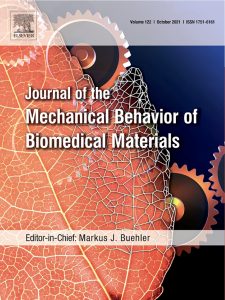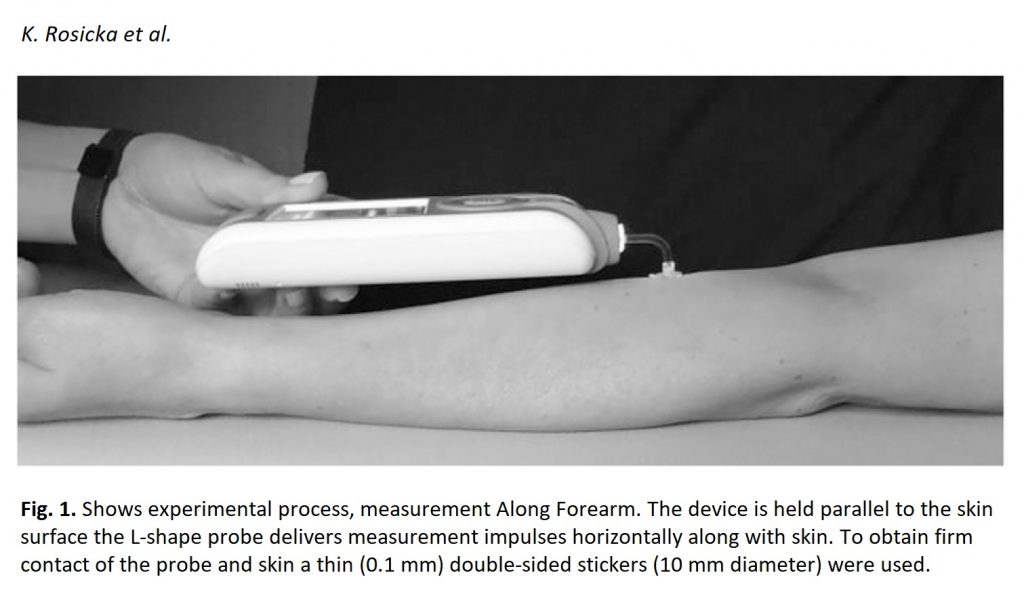Publications

Skin anisotropy: Finding the optimal incision line for volar forearm in males and females
Authors: K. Rosicka 1, M. Hill 2, M. M. Wdowski 2
Affiliations:
- Department of Biological Sciences, Faculty of Physical Culture in Gorzow Wlkp., Poznan University of Physical Education, Gorzow Wlkp, Poland
- Centre for Sport, Exercise and Life Sciences, School of Life Sciences, Coventry University, United Kingdom
Journal: Journal of the Mechanical Behavior of Biomedical Materials - August 2021, Volume 124, Article no. 104805 (DOI: 10.1016/j.jmbbm.2021.104805)
-
Field & Applications:
- Medical
- Skin / Dermatology
Purpose: Proper understanding of skin biomechanics, viscoelasticity and investigation of skin tension vectors is necessary to find optimal incision lines. Great tension across a healing wound after any surgical procedure might lead to forming hypertrophic scars. The aim of the study was to investigate tension lines in volar forearm skin in young males and females, in order to ensure best incision line.
Methods: Five biomechanical and viscoelastic parameters were measured using a hand-held myotonometer: Oscillation Frequency [Hz], Dynamic Stiffness [N/m], Logarithmic Decrement of tissue’s natural oscillation, Mechanical Stress Relaxation Time [ms], and Creep. Measurements were taken in four different directions; Along Forearm, Across Forearm, Along Langer’s Line and Across Langer’s Line.
Results: Significant main effects for direction were found for Oscillation Frequency (p < 0.001, η2 = 0.371) [Hz], Dynamic Stiffness (p < 0.001, η2 = 0.522) [N/m], Logarithmic Decrement (p < 0.001, η2 = 0.083), Mechanical Stress Relaxation Time (p < 0.001, η2 = 0.494) [ms] and Creep (p < 0.001, η2 = 0.480). For each parameter except for logarithmic decrement results obtained Along Langers Line and Across Forearm were significantly different to Across Langers Line and Along Forearm (p < 0.001, d = −2.76 – 2.66). Significant main effects for sex were found for logarithmic decrement Along Forearm (p < 0.001, d = 1.698) and Across Langer’s Line (p = 0.021, d = 1.697).
Conclusions: Our results suggested that optimal incision line for this age group in males and females could potentially be performed diagonally i.e. Across Langer’s Line or parallel i.e. Along Forearm to forearm axis. These directions would provide the lowest tension across a healing wound and possibly minimalize the risk of hypertrophic scarring post incision.
Keywords: Biomechanical properties, Viscoelastic properties, ScarsLanger’s line, BEST lines

This study demonstrated that the volar forearm skin has different mechanical and viscoelastic properties depending on the direction of force applied. The optimal skin incision line for this age group in males and females could potentially be performed Across Langer’s Line (i.e. diagonally) or Along Forearm (i.e. parallel to forearm axis). These directions would provide the lowest tension across a healing wound and potentially minimalize the risk of hypertrophic scarring post incision.
Taking into consideration Logarithmic Decrement incision direction Along Forearm should contribute to better outcomes. Furthermore, our study evidenced a quick and reliable quantitative measurement method in order to plan the optimal incision line. Finally, some differences were observed between males and females that warrants further investigation along with a more age diverse group on different areas of human body skin.


